-
1 of 253523 objects
The Natural history of Carolina, Florida and the Bahama Islands. Vol. I. 1731
53.0 x 7.5 cm (book measurement (inventory)) | RCIN 1085716

Mark Catesby (1682-1749)
The Natural history of Carolina, Florida and the Bahama Islands : containing the figures of birds, beasts, fishes, serpents, insects and plants : particularly, the forest-trees, shrubs, and other plants. . . ; v. 1 / by Mark Catesby 1731

Mark Catesby (1682-1749)
The Natural history of Carolina, Florida and the Bahama Islands : containing the figures of birds, beasts, fishes, serpents, insects and plants : particularly, the forest-trees, shrubs, and other plants. . . ; v. 1 / by Mark Catesby 1731
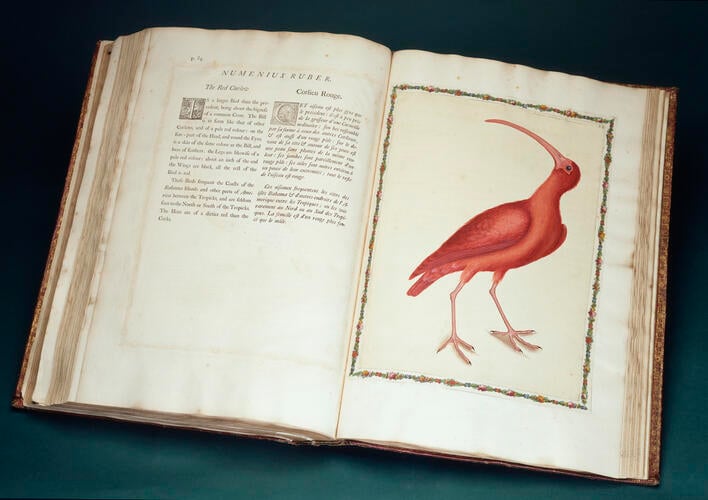
Mark Catesby (1682-1749)
The Natural history of Carolina, Florida and the Bahama Islands : containing the figures of birds, beasts, fishes, serpents, insects and plants : particularly, the forest-trees, shrubs, and other plants. . . ; v. 1 / by Mark Catesby 1731
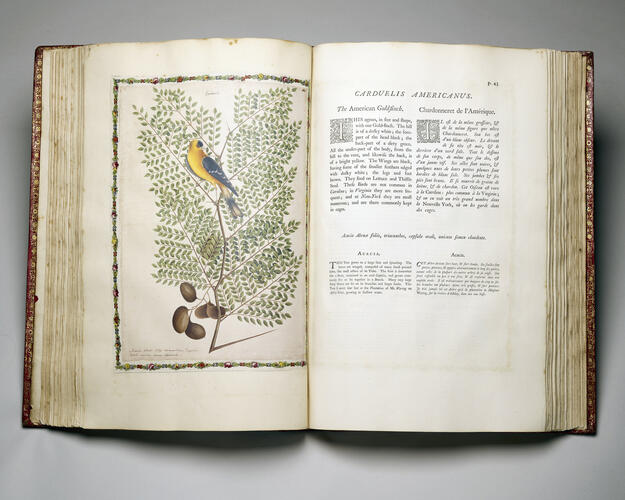
Mark Catesby (1682-1749)
The Natural history of Carolina, Florida and the Bahama Islands : containing the figures of birds, beasts, fishes, serpents, insects and plants : particularly, the forest-trees, shrubs, and other plants. . . ; v. 1 / by Mark Catesby 1731
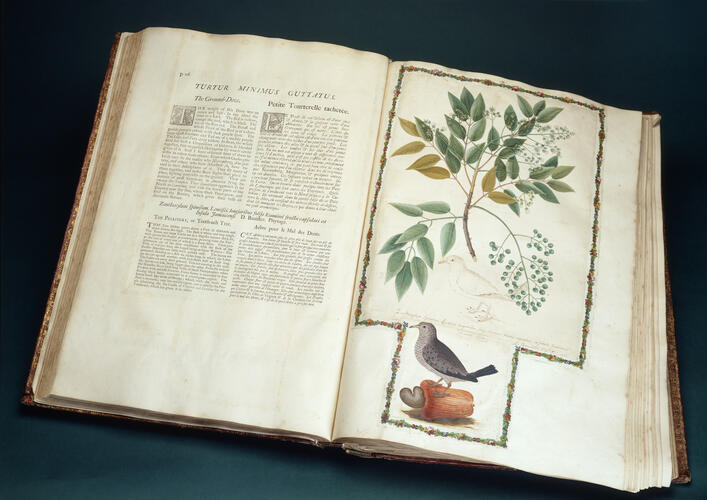
Mark Catesby (1682-1749)
The Natural history of Carolina, Florida and the Bahama Islands : containing the figures of birds, beasts, fishes, serpents, insects and plants : particularly, the forest-trees, shrubs, and other plants. . . ; v. 1 / by Mark Catesby 1731
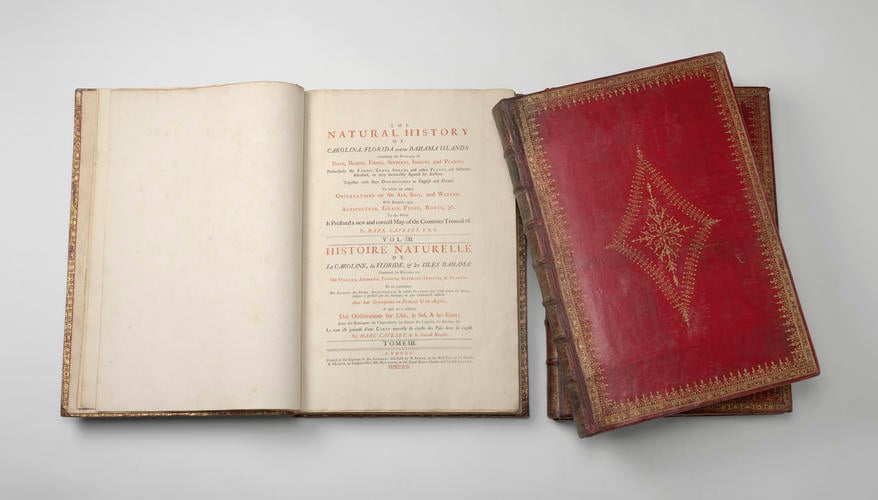
Mark Catesby (1682-1749)
The Natural history of Carolina, Florida and the Bahama Islands : containing the figures of birds, beasts, fishes, serpents, insects and plants : particularly, the forest-trees, shrubs, and other plants. . . ; v. 1 / by Mark Catesby 1731
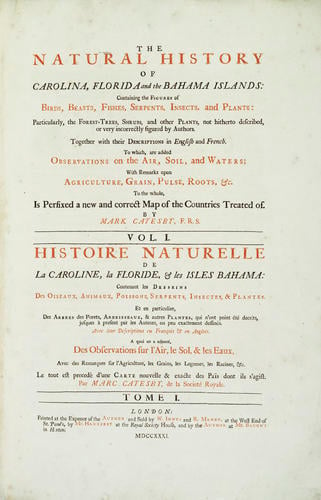
Mark Catesby (1682-1749)
The Natural history of Carolina, Florida and the Bahama Islands : containing the figures of birds, beasts, fishes, serpents, insects and plants : particularly, the forest-trees, shrubs, and other plants. . . ; v. 1 / by Mark Catesby 1731







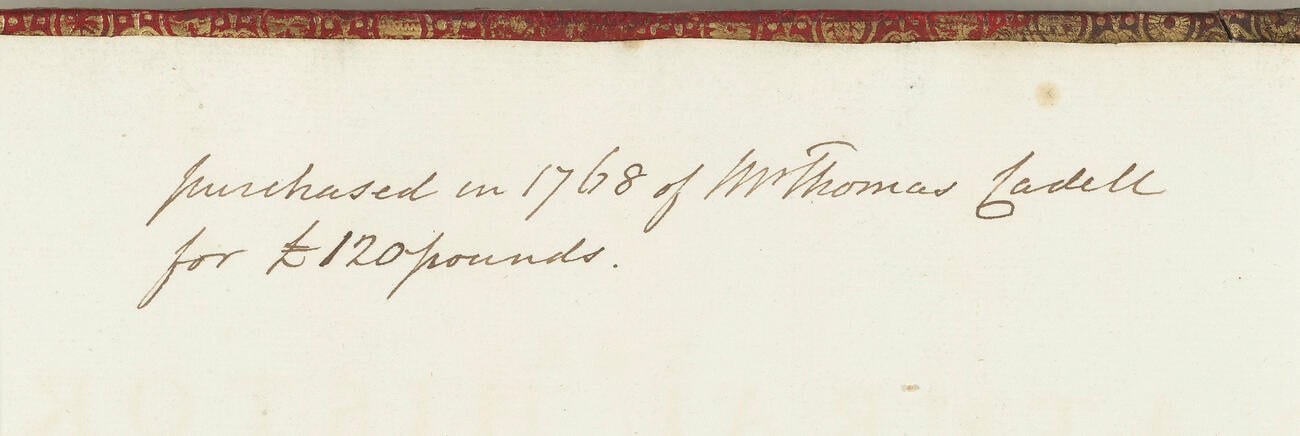
-
First travelling to North America in 1712, the naturalist Mark Catesby was driven, in his own words, by ‘a passionate Desire of viewing as well the Animal as Vegetable productions in their native countries’. He remained in Virginia for seven years, viewing, collecting and painting the natural world, and sending seeds and saplings back to friends in Britain. Returning to London in 1719, Catesby soon became well known among British naturalists and patrons, including Sir Hans Sloane (1660-1753), William Sherard (1659-1728) and Peter Collinson (1694-1768).
In 1720, Sherard and the Royal Society, mooted an expedition to South Carolina to finish the work started by John Lawson’s New Voyage to Carolina (1709). The entomologist, Eleazar Albin (c. 1690-c. 1742), was offered the post but it appears that he refused it, the role being given instead to Catesby. However, the departure in early 1721 was delayed after he was approached by James Brydges, 1st Duke of Chandos (1673-1744) who suggested he travel to Africa as a naturalist in the service of the Royal African Company. This idea had fallen through by December, and in early 1722, Catesby arrived at Charleston and began his work.Travelling from Charleston to the Appalachians, probably as far as Georgia, and later to the Bahamas, Catesby drew and collected specimens of the plants and animals he encountered. He regularly sent seeds and prepared specimens back to his sponsors in Britain and painted a series of watercolours for Sloane. Soon, the demand from sponsors proved so immense that Catesby requested money from Sherard to allow him to purchase an enslaved boy to assist him on an expedition along the Savannah River in March 1723. He also made use of Indigenous knowledge, hiring Native American guides and luggage bearers to assist him in tracking animals and to help him understand the varying medicinal and culinary properties of the native plant-life found in the region.
Returning to Britain in 1726, Catesby set about preparing his findings for publication. Inspired by Maria Sibylla Merian’s Metamorphosis Insectorum Surinamensium (1705) and the Horti medici Amstelodamensis (1697-1701), he planned for prints of his drawings to be placed on pages facing their description and hoped that he could hire the finest Dutch, Flemish and French engravers for the project. However, due to a lack of financial support from his sponsors, Catesby had to abandon a proposed trip to Paris and Amsterdam and instead decided to learn to etch the plates himself with advice from his friend Joseph Goupy.
On announcing the proposed work, A Natural History of Carolina, Florida and the Bahama Islands, in 1727, he planned for it to be published by subscription, issued in ten parts consisting of 20 plates published four months apart. The proposal soon gained 155 subscribers, requesting an estimated 200 copies. The timescale for the work was quickly proven untenable and on the publication of the final part in 1747, Catesby offered an apology to his subscribers for the delays.
These delays were caused by Catesby's determination to oversee all parts of the process. While the work appears to have initially been offered with both coloured and uncoloured plates, surviving copies indicate that the coloured sets were the ones that were wanted by subscribers. Wary of sending his original drawings to colourists for fear of them being lost or damaged, he seems to have printed and coloured a pattern set to be used instead. The coloured plates in each of the parts were then personally inspected by Catesby who added the finishing touches. He also coloured several copies himself for presentation to significant patrons. Such efforts seemed to have paid off. After looking at a copy of the finished work, the Finnish naturalist and pupil of Carl Linnaeus, Peter Kalm remarked that Catesby had 'with unbelievably lifelike colouring, presented the rarest trees, plants, animals, birds, fishes, snakes, frogs, lizards and insects that occur in that place. It is difficult to believe that it is not the real thing that stands in its natural colour on the paper.'
The Royal Library’s copy of the Natural History of Carolina is unique. It was compiled in 1755, six years after Catesby’s death, probably through the influence of his friend and fellow naturalist George Edwards (1694-1773). The books contained Catesby’s original watercolours, inserted at the appropriate points in each volume. Where more than one study was available, they were placed on successive leaves, or tipped in facing one another. Other drawings, which Catesby had merged for the printed plate, were placed next to each other on mounting sheets. Etched and coloured floral borders appear to have been added at a later date. Such was the number of drawings added to the volumes that it necessitated the division of the second volume into two and the inclusion of an amended title page renumbering the final volume as the third.
Edwards was well known to Catesby and his family. He had borrowed the drawings to correct colouring in his own copy of the Natural History of Carolina and seems to have acted as an intermediary between Catesby’s widow, Elizabeth and the ‘proprietors’ Marsh, Wilcox and Stichell to whom she had sold the drawings shortly before her death in 1753. The volumes then came into the possession of the bookseller Thomas Cadell some time before 1768, where they were purchased for £120 by John Stuart, 3rd Earl of Bute, for George III. The set was then housed at the King’s Library at Buckingham House. It appears that the books were retained from George IV’s gift of that library to the nation in 1823 (with the volumes seemingly being swapped for a set presented to Queen Caroline, consort of George II) and brought to Windsor by 1832 to be housed in William IV’s new Royal Library.
In 1994, the drawings were removed from the volumes, conserved and mounted. Such work revealed that the verso of many sheets contained Catesby’s preliminary sketches, offering new insights into his creative processes. They were replaced in the books by facsimiles.
Further reading
Henrietta McBurney, Illuminating Natural History: The Art and Science of Mark Catesby (New Haven & London, 2021)
Provenance
Purchased in 1768 by George III from Thomas Cadell the Elder
-
Creator(s)
(printer)Acquirer(s)
-
Measurements
53.0 x 7.5 cm (book measurement (inventory))
57.0 x 8.0 cm (book in box)
Category
Other number(s)
ESTC : English Short Title Catalogue Citation Number – ESTC T147030Alternative title(s)
The Natural history of Carolina, Florida and the Bahama Islands : containing the figures of birds, beasts, fishes, serpents, insects and plants : particularly, the forest-trees, shrubs, and other plants... ; v. 1 / by Mark Catesby